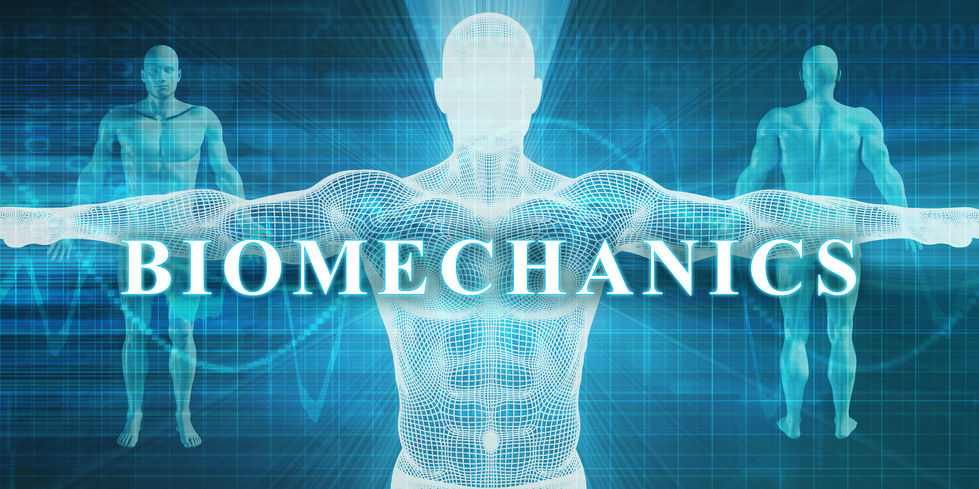 Andy Tay
Andy Tay
Biomedical engineering is a highly interdisciplinary field that integrates knowledge from physics and chemistry to solve biological problems. Although it is becoming an extremely popular field and biomedical jobs are expected to increase substantially, due to its diverse research topics, many people do not fully understand what it comprises. This article is part of a series that explains the different subject matters within biomedical engineering. Through this series, I hope to improve public understanding of this field, and potentially help students who are choosing majors and contemplating graduate education make their decisions. This spotlight is on biomechanics.
What is biomechanics?
Biomechanics refers to the application of principles of mechanics to understand biological processes. This field started largely at the body level, where sports scientists seek to understand how to best optimize the mechanics of the skeletal and muscular systems to enhance athletes’ and soldiers’ performance. With technological advances, this field has now been extended to tissues, cells, and even molecules.
Levels of biomechanics
Molecular biomechanics
As the name suggests, this sub-field focuses on the roles of mechanical properties of molecules. Two highly studied molecules are actin and myosin, which are involved in muscular contractions and relaxations. Other molecular processes being studied are ejection of genetic materials from viruses which require a large amount of pressure, and the condensation of DNA into chromosomes for packing into the nucleus. Nevertheless, much of the research is still being performed at the computational-model level due to a lack of tools with sufficient resolution to study these intricate processes.
Cellular biomechanics
This research field has become extremely popular in the last decade due to increasing availability of tools such as microfluidic platforms for investigation. One interesting area is the study of cellular stiffness using techniques such as atomic force microscopy, micropipette aspiration, and shear stress-induced deformations. Using these techniques, scientists have independently found that circulating tumor cells (CTCs), which are believed to be precursors to secondary metastasis, are stiffer than blood cells (i.e. platelets, red blood cells, and white blood cells). Capitalizing on this knowledge, various groups have isolated CTCs based on their higher stiffness for cancer diagnosis and leveraged them to monitor patients’ response to treatments. Scientists are also studying stem cells and how their mechanical properties correlate with their differentiation potential and suitability for transplantation, as well as T cells that might have different tumor penetration capacity.
Tissue biomechanics
Tissue biomechanics has focused largely on in vitro systems. Scientists have characterized the properties of various tissues such as bones, muscles, and even eyes of animals. In such measurements, scientists typically perform tensile, compressive, bending, and torsional tests across different tissues to evaluate their biomechanical properties like Young’s modulus.
However, the Otger Campàs group recently used biocompatible, magnetically-responsive ferrofluid oil microdroplets to apply local and controlled stresses in tissues with simultaneous reading of tissue mechanics. For the first time, in vivo study of mechanical processes such as tailbud elongation in zebrafish can now be studied.
The future?
The science community appreciates the role of mechanics in biology. Although large strides have been made in this field, future discoveries depend highly on tool development. Particularly, we need tools for in vivo study and tools that can exert forces with sufficiently high spatio-temporal resolution.
Opportunities
- The Mechano-Biology Institute in Singapore organizes paid internships for students. Students can perform research in areas ranging from nuclear deformations to cellular biomechanics.
- The Biophysical Society organizes several meetings every year, and travel fellowships are given to students to attend these meetings.
Quartzy is the world’s No. 1 lab management platform. We help scientists easily organize orders, manage inventory, and save money. We’re free and always will be. Visit Quartzy.com or reach out at info@quartzy.com.
Interested in writing for The Q? Send us an email!
Share this:

Andy Tay
Andy Tay is a graduate student in the University of California, Los Angeles and an instructor in the National University of Singapore. His research focuses on magnetic neural stimulation and magnetotactic bacteria. He enjoys science communication and using the gym in his free time.
